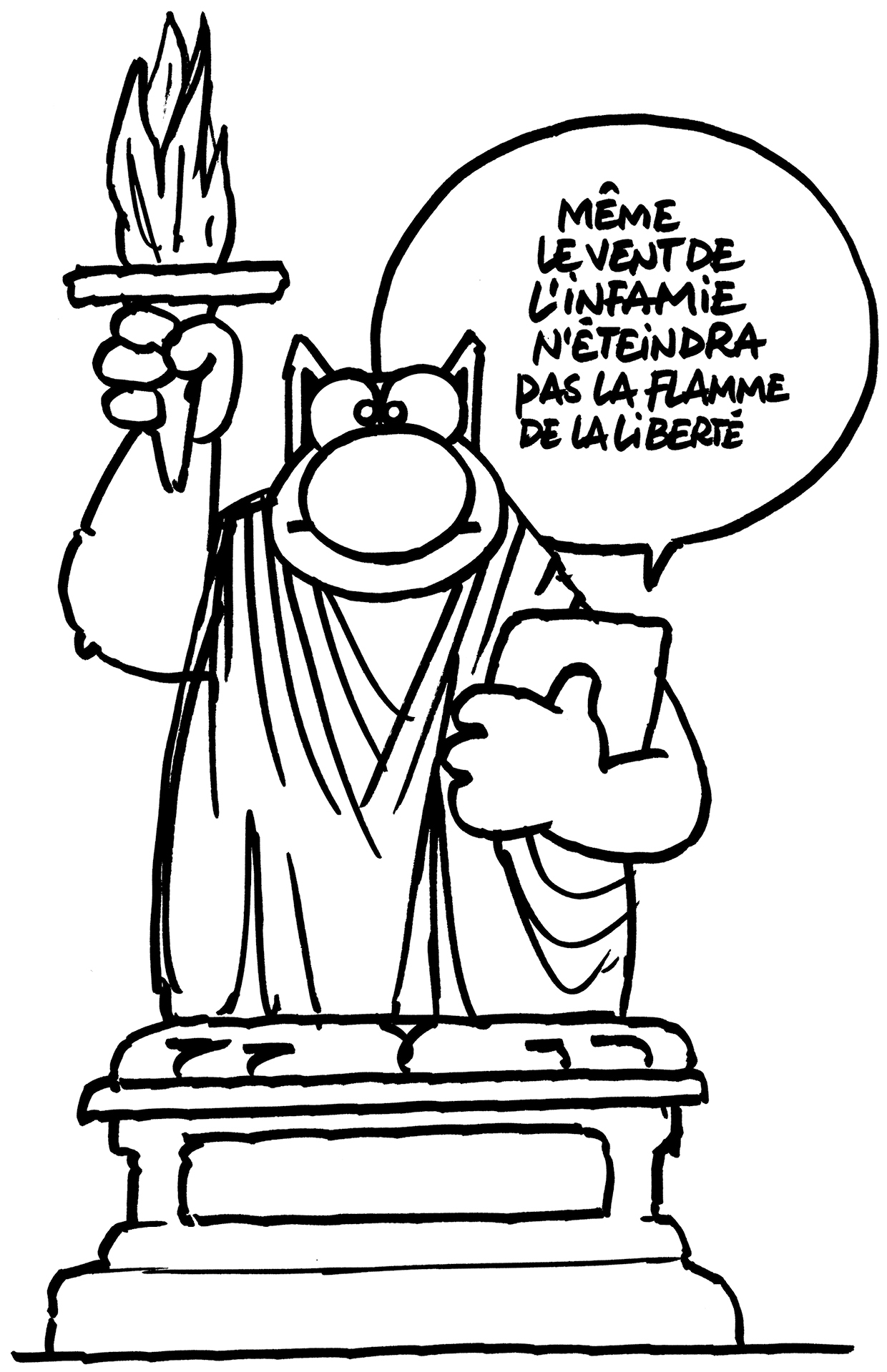THE 20 STAGES OF MAKING A BRONZE CAT
Stage 19:
The mistake
I promised I would tell you why ‘Like a Mouse on the Wire’ (the mouse who is tightrope-walking on a rope held in the air by Le Cat) is so big. As I explained in Stage 7, we send the 3D scan to the milling company. Now, what happened was that for this one we got the measurements wrong. We usually ask for there to be 2 metres from the tip of the ears to the soles of the feet. But we didn’t think that for this one the arms and hands of the feline would be above his ears.

When François Deboucq got the polystyrene model, he called me, panicking a bit, and said that we’d have to mill another one with the right height. I jumped in the car and rushed to his workshop. And yes, it was very big. But it looked great! We calculated that if we put it on a base 40cm high (instead of 70cm) and transported it on a low-loader truck trailer, we’d get it under all the motorway bridges. Whew!! So we kept it as it was … it was just too fabulous!
Stage 20:
Technical specifications
When you exhibit in a public place, the number of technical constraints is incredible, particularly the safety measures. I told you about the fountains and water (16) and the weight of the statues (15), but I haven’t yet talked about the wind.
When a storm hits a town, it can cause a lot of damage and we have to be prepared for this sort of problem.
The Paris Prefecture requires the material exhibited to be able to resist winds up to 160 km/h (100 mph). These are obviously not common, but they who can do more, can also do less – as they say – so we did. Our sculptures, their bases and our info-points would not be blown over by 160km/h winds … this was verified and certified by Veritas, a company specialising in these things. In a 160km/h wind, Le Cat would probably see a whole load of things flying by him, but he would not budge … .

Not even a tempest of infamy will put out the flame of freedom